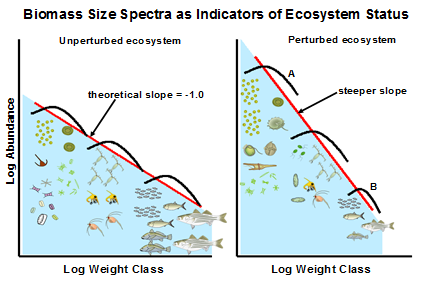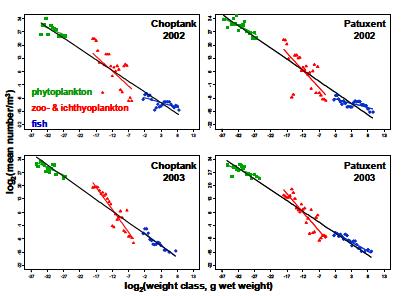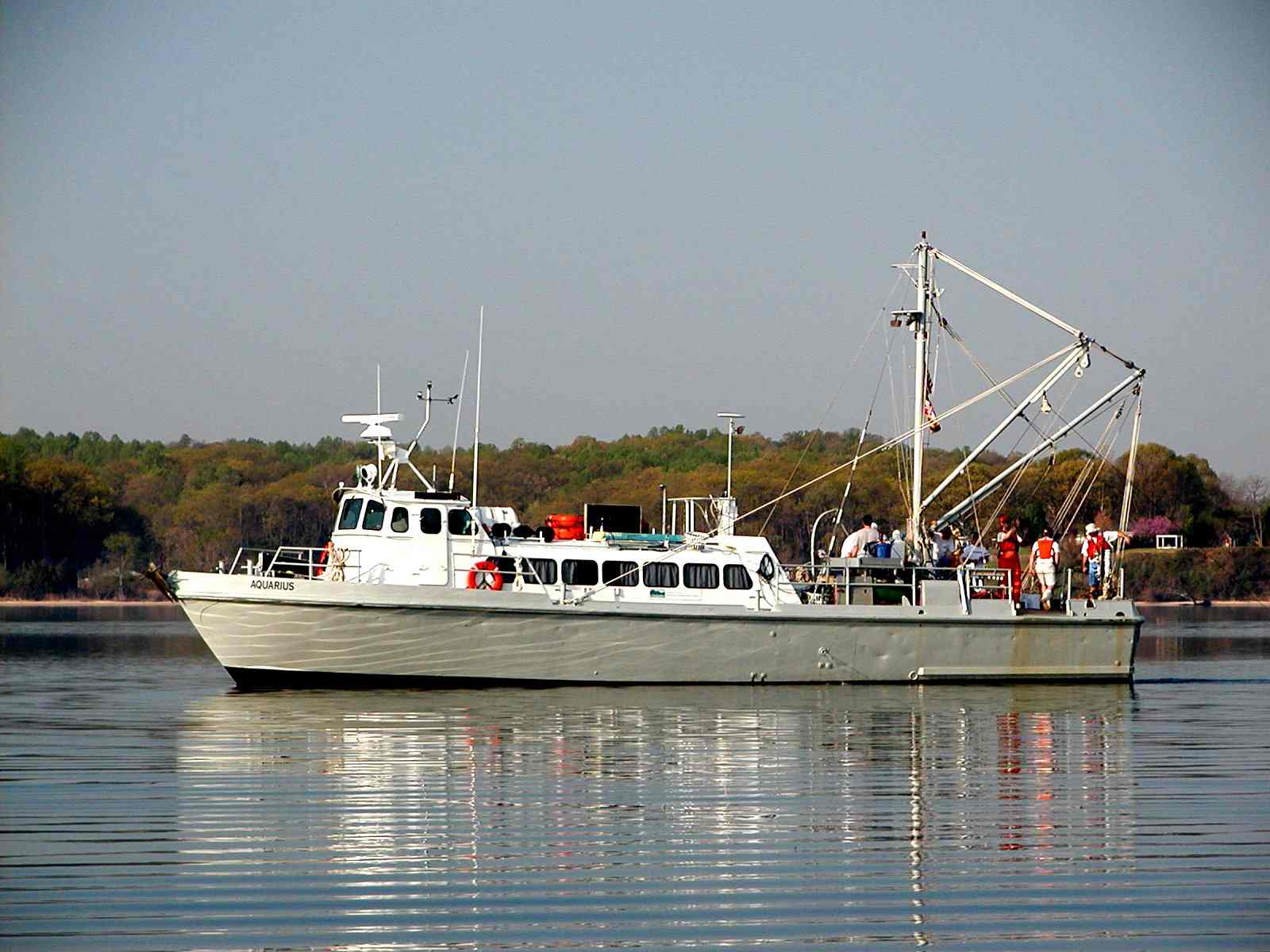Indicators of Fish Community Status
Fish communities in esturaries and coastal ecosystems are stressed by fishing and other human activities. We have evaluated the state of fish communities in Chesapeake Bay and developed indicators of status that depend on abundance, species diversity, young-of-the-year abundance (an indicator of recruitment success), and by analyzing biomass size structure as parts of research programs funded by the National Science Foundation, the National Oceanic and Atmospheric Administration, the U.S. Environmental Protection Agency and the Maryland Department of Natural Resources. Inter-annual, seasonal and regional variability in fish community structure were demonstrated. The abundant forage fish, bay anchovy, plays a dominant role in fish community dynamics throughout the Chesapeake Bay, while abundance and variability in abundance of young-of-the-year anadromous fishes (e.g., striped bass, white perch, river herrings) are key contributors to community indicators in the upper Chesapeake Bay and its tributaries. We developed biomass size spectra (BSS) models and multivariate statistical models as indicators of fish community structure. Those models and comparisons of BSS across spatial scales from subestuaries to estuary regions of Chesapeake Bay were effective in defining trends and identifying environmental factors such as freshwater flow that control community structure.

Conceptual model of a normalized biomass size spectrum: left panel, unperturbed ecosystem; right panel, perturbed ecosystem

Normalized biomass size spectra of three trophic levels for Choptank and Patuxent Rivers in summer 2002 and 2003. Integral spectra are shown for each trophic level (colored lines) as well as for all trophic levels conbined (black line).
Representative Publications
- Jung, S. and E.D. Houde. 2005. Fish biomass size spectra in Chesapeake Bay. Estuaries 28:226-240.
- Kimmel, D. G., W. D. Miller, L. W. Harding, Jr., E. D. Houde and M. R. Roman. 2009. Estuarine ecosystem response captured using a synoptic climatology. Estuaries and Coasts 32:403-409.
- Connelly, W. J. 2011. Scales of variability in the size composition and community structure of fishes in estuarine ecosystems. PhD Dissertation, University of Maryland College Park.




